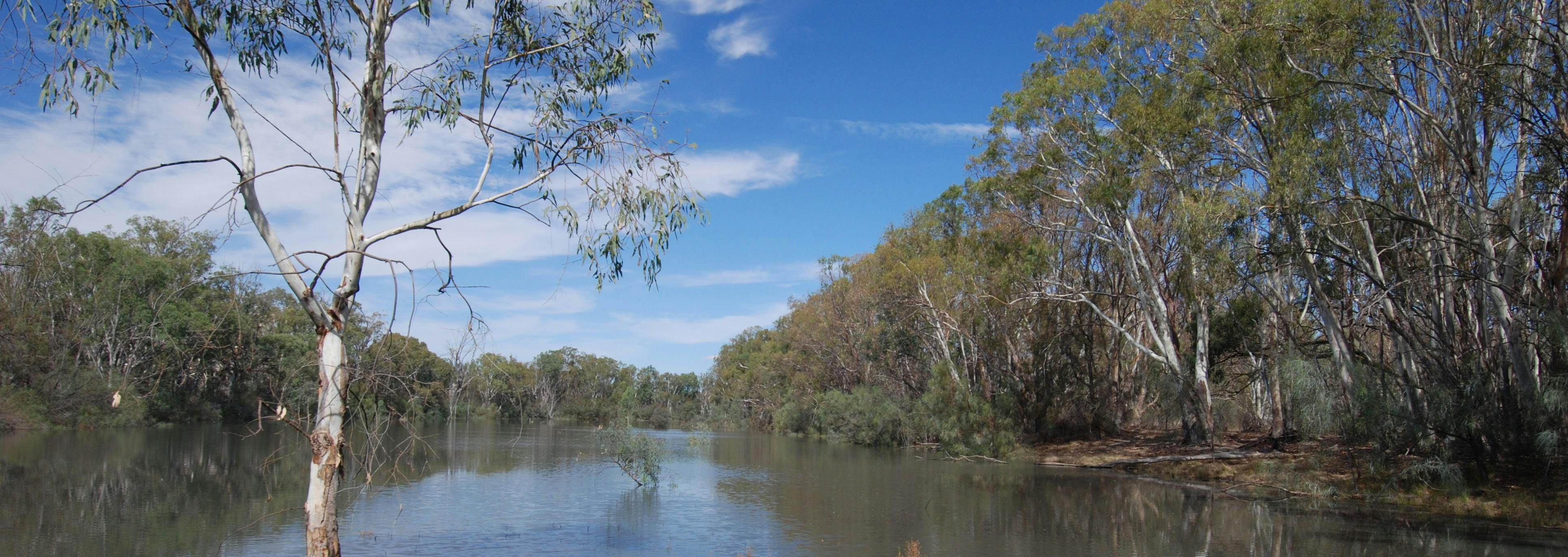FAQs
- taking our survey
- Email a submission with 'Murray River National Park Draft Management Plan' in the subject line to: DEWProtectedAreaManagement@sa.gov.au
What is a park management plan?
Park management plans are the main strategic documents used to manage protected areas in South Australia.
They set strategic direction, contain information on park values and threats, and outline the objectives and strategies for how parks will be managed.
All parks in South Australia are required to have a park management plan.
Park management plans are developed and adopted in accordance with the National Parks and Wildlife Act 1972.
Why is the park management plan being changed?
The existing park management plan for Murray River National Park was adopted in 1994, with some amendments in 2010.
Since the plan was adopted, multiple areas have been added to the park and visitor numbers have greatly increased.
Developing a new park management plan provides the opportunity to review how the park will be managed into the future, and for the community to give their input.
It also provides the opportunity to give greater recognition of First Nations people's history and involvement in managing the park.
How does a park management plan guide the management of the park?
Park management plans are high level, strategic documents that detail the authorising environment for activities within a park..
Modern park management plans focus on key themes, and develop a range of objectives and strategies under these themes.
The current draft plan has identified four themes, each with objectives and strategies to inform management.
This draft management plan also contains zoning, to help provide a spatial reference on how the park will be managed into the future.
What are the major differences between this draft management plan and the existing plan?
The existing plan only considers 3 areas of the Murray River National Park: Katarapko, Lyrup Flats and Bulyong Island. Since then, multiple areas have been added to the park. This new draft management plan takes into account those other sections.
The existing management plan only creates zones for one area, Katarapko. These zones are relatively complex and relate to the ecology of the area and visitor management strategies. The draft plan delivers a simplified zoning scheme that applies across all areas.
The draft plan also contains a theme regarding the rights of First Nations people to be involved in management of the park, outlining a number of strategies to detail how park managers will work with First Nations people. This greatly builds on what is mentioned in the existing plan.
The draft plan also refreshes and details contemporary strategies and objectives around biodiversity, conservation, and recreation.
Are any additional visitor facilities detailed in this plan?
The plan identifies Visitor Use Zones in select areas of Murray River National Park.
Generally, Visitor Use Zones are where there is existing disturbed land or other factors that makes the area suitable for developing additional facilities.
They are areas of prolonged visitor stays – not places where visitors pass through on a trail, but hubs where people will congregate for longer periods.
Some Visitor Use Zones already have visitor infrastructure, while others are outlined as potential sites for future development.
Designating Visitor Use Zones allows park managers to respond when funding becomes available to develop additional facilities, or to manage increases in visitor numbers over time in a sustainable manner.
Given much of the appeal of the Murray River National Park is in small-scale developments and a sense of remoteness, the Visitor Use Zones outlined in this plan envisage relatively minor developments, such as bookable campsites, nature-play facilities and day visit areas.
Not all visitor facilities are located in Visitor Use Zones. Trails, and infrastructure associated with those trails such as lookouts or bird hides, may be developed outside of Visitor Use Zones.
What does this plan mean for camping and recreation across the park?
Generally, this plan will not impact on how you currently use the park.
The plan focusses on the future, and how the park will be managed in the longer term.
This includes identifying areas that will be managed solely for conservation outcomes, and other areas where future trails, campsites, or eco-tourism potential is outlined.
I currently access the park by boat or houseboat for camping. How does this new plan affect me?
This plan formalises the current arrangement, whereby certain areas that are otherwise solely managed for conservation may be accessed from the water for camping, including the mooring of houseboats.
The plan remains flexible, in that access may be restricted should impacts occur.
Importantly, the management plan only affects land within the park boundaries. Parcels of un-alienated Crown land along the river bank are not affected.
How does this management plan interact with other plans aiming to manage water across the region?
There are other plans in place to manage water across the region, including in adjacent parks and Crown land.
These plans will not be affected by this new management plan.
Instead, the management plan seeks to enable ongoing works to provide water to sensitive environments, and develop strategies to ensure ongoing benefit to park values through the management of water across the park.
How can I have my say on the proposed management plan amendments?
Have your say by:
Post your written submission to:
Department for Environment and Water
National Parks and Protected Area Program
GPO Box 1047 ADELAIDE SA 5001


